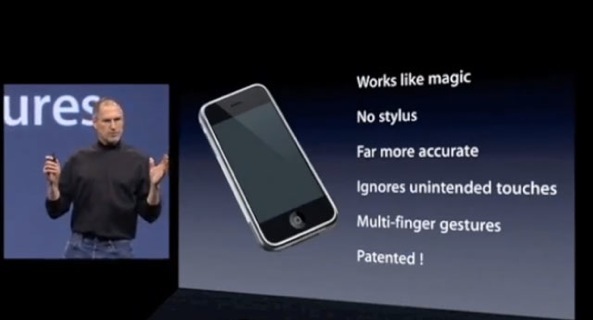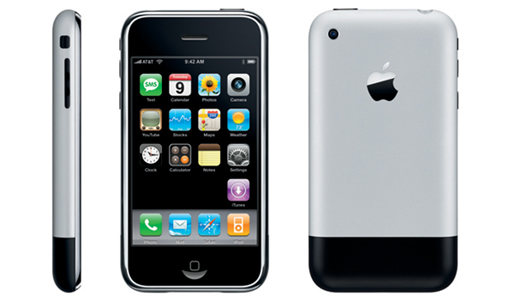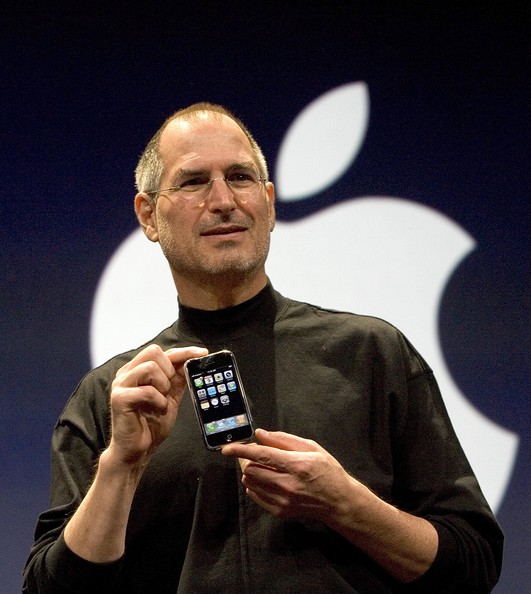Today eight years ago, the original iPhone went on sale in the United States after a 6-month period of unprecedented hype triggered by its January 9, 2007 introduction. Like most other Apple products were panned as duds but went on to become smash hits, the Apple smartphone was universally dismissed.
Then industry heavyweights such as Nokia, RIM and Palm—with a little help from shortsighted technology press—ridiculed the device for its poor (by non-smartphone standards) battery life, multitouch interface, software keyboard and many other features that were ahead of its time.
In retrospect, rivals’ knee-jerk reaction to the iPhone, coupled with their risk aversion and stubborn insistence on old ways of doing things, contributed to their incredibly fast undoing.
Doomsayers notwithstanding, the device went on to sell hundreds of millions of units worldwide (726 million units to date, to be precise), becoming the de facto gold standard for smartphones. And while the iPhone is now common sight in all corners of the globe, its beauty isn’t that it invented, but re-invented the hopelessly-out-of-touch (to quote T-Mobile CEO) industry.
It gave the sleepy, self-absorbed wireless carriers—and handset makers, their partners in crime—a much needed kick in their butt for not listening to consumers’ needs at all. Sure, there were smartphones before the iPhone but they looked like they were designed by committees (which they actually were) and one needed a user manual to master them.
There were phones with touchscreens before the iPhone but none implemented the sensation and immediacy of touch so elegantly and seamlessly as Apple’s device. There were also mobile app stores, of sorts, before the App Store. But none has offered the ease of use and instant gratification of tapping a colorful icon to have an app arrive wirelessly on your Home screen.
No smartphone other than the iPhone has managed to consistently earn highest customer satisfaction scores to this date. And as we’ve witnessed, in the process of doing so the iPhone has turned the largely written off, beleaguered computer maker from Cupertino into the most powerful corporation in the world, one that can easily sway whole multi-billion dollar industries with their decisions.
The original iPhone was available exclusively on AT&T in the United States and ran on the carrier’s sluggish EDGE data network. Back then, Apple stock sold for a measly $17.43.
The entry-level model with eight gigabytes of storage cost $599 on a two-year contract, though Apple dropped its price to $399 in September of that year. In November 2007, the iPhone hit the United Kingdom, France, Germany, Portugal, Ireland and Austria.
Originally lauded as three devices in one—a revolutionary mobile phone, a widescreen iPod with touch controls and a breakthrough Internet communicator—the iPhone in just one year became anything its owners wanted it to become thanks to the introduction of the App Store in the summer of 2008.
Although Apple did allow developers from the onset to write web apps that ran in the iPhone’s Safari browser, the experience left a lot to be desired and it wouldn’t be until the App Store came along that mobile apps would become a cultural phenomenon like no other.
Despite the naysayers, even the staunchest of iPhone critics agree that the ‘Jesus phone,’ as it was labeled by click-hungry press, kickstarted the mobile industry revolution.
I clearly remembered life before the iPhone.
I was a longtime Nokia fan in my pre-iPhone years.
I had also owned dozens of smartphones by Samsung and Motorola. Each of these devices I got fed up with quickly. I couldn’t understand why these companies that were creating fortunes selling mobile phones couldn’t create compelling and engaging user experiences on a small screen.
Why was setting up an email account on a mobile phone such a tedious task? Didn’t people deserve phones that excelled at both form and function? Why did carriers have to control everything and shovel their junkware down our throat? Why did I need a computer and a special, ridiculously pricey cable just to install a third-party app on my Nokia 6600?
And why the heck was mobile software so overpriced?
That, my friends, was what living in the mobile world was like in the pre-iPhone days.
Nowadays carriers don’t wield absolute power as they used to. User experience and great design matter again. Nowadays tens of thousands of young people write mobile software, apps are everywhere and people have the freedom of choosing between iOS, Windows Phone, Android, BlackBerry and other mobile platforms.
But history is now repeating itself with the Apple Watch.
Superficial reviewers who aim for clickbait have slammed the Apple Watch because they were too lazy to take the time to realize how to set up and customize notifications hitting their wrist.
These critics have complained about third-party apps because they run on an iPhone and don’t tap watch hardware and sensors directly, but purposely or out of ignorance have failed to mention that it’s only a matter of time before native experiences arrive.
As Apple said from the onset, native Apple Watch apps are coming this fall.
And if history of the iPhone is anything to go by, native app development will help the Apple Watch take off in a big way just as the App Store has catapulted the iPhone into being the most sought-after device Apple has ever created.
Nowadays, the iPhone accounts for nearly 70 percent of Apple’s revenue and more than half of its profits so it’s essential to the company’s fortunes.
For those wondering, Apple has released ten different iPhone models between 2007 and 2014: the original iPhone, iPhone 3G, iPhone 3GS, iPhone 4, iPhone 4s, iPhone 5, iPhone 5c, iPhone 5s, iPhone 6 and iPhone 6 Plus.
Do you remember your pre-iPhone mobile experience?
And can you still recall that feeling of taking an iPhone into your hand for the very first time, and interacting with it?
Share your memories down in the comment section.


